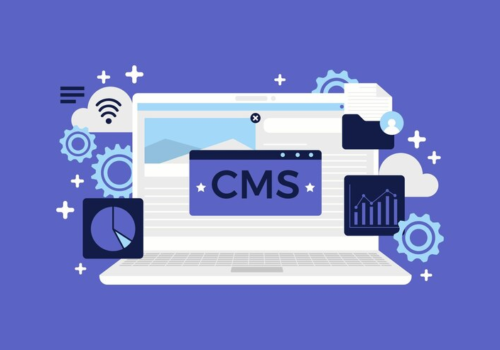Statamic vs WordPress: Choosing the Right CMS
In the realm of content management systems (CMS), choosing the right platform can significantly impact the success of a website. Two notable contenders in this space are Statamic and WordPress. While WordPress is a household name with widespread popularity, Statamic has been making waves with its unique approach. This post delves into a comprehensive comparison of these two platforms, helping you understand which might be the best fit for your needs.
Background and History
“Statamic emerged as a fresh player in the CMS market, built on the Laravel framework. Its inception was driven by a desire for a more streamlined, developer-friendly approach to content management. Statamic is recognized for its flat-file architecture, deviating from the traditional database-driven approach.
- Statamic’s design philosophy centers on simplicity and efficiency. This CMS appeals to developers who prefer a clean, maintainable codebase and a system that offers more control over website functionality. The flat-file nature of Statamic not only enhances security by reducing points of vulnerability but also simplifies the deployment process. It’s especially advantageous for developers who are already familiar with Laravel, as they can leverage this knowledge to create robust, custom solutions;
- Another hallmark of Statamic is its powerful templating engine, Antlers. This allows for expressive and flexible templating, making it easier for developers to craft unique layouts and features. The CMS also includes features like built-in caching and image manipulation, which contribute to improved website performance and user experience;
- Furthermore, Statamic’s control panel is highly customizable, providing a tailored content management experience. It empowers developers to create intuitive interfaces for content editors, thereby marrying functionality with ease of use.
WordPress, on the other hand, has a long history dating back to 2003. It evolved from a simple blogging platform into a versatile CMS. WordPress’s ease of use and extensive plugin ecosystem have made it a go-to choice for a broad range of websites. The primary strength of WordPress is its accessibility to non-technical users. With an intuitive dashboard, users can manage content, install themes, and add plugins with little to no coding experience. WordPress’s plugin repository, boasting tens of thousands of plugins, allows users to add almost any functionality to their site, from SEO tools to e-commerce solutions.
WordPress also benefits from a massive global community, contributing to a wealth of resources, including themes, plugins, tutorials, and forums. This community support is invaluable for beginners and experienced users alike, offering solutions, advice, and updates.
Moreover, WordPress’s flexibility makes it suitable for a wide range of websites, from small personal blogs to large corporate portals. Its theme system enables users to change the site’s appearance quickly, while the plugins extend functionality, catering to various needs. In terms of content management, WordPress has evolved to offer a more modern experience with its Gutenberg editor. This block-based editor streamlines the process of creating rich content layouts, making it easier for users to design posts and pages.
Both Statamic and WordPress cater to different segments of the web development market. Statamic’s developer-centric approach, based on a modern framework, suits those seeking a more bespoke, performance-oriented solution. WordPress, with its user-friendly interface and vast plugin ecosystem, remains the ideal choice for those who prioritize ease of use and community support. The decision between the two should be based on the specific needs, technical skill level, and objectives of the project or user.”
Core Features
Statamic, with its innovative features, represents a significant shift in the CMS landscape. Its flat-file architecture is a cornerstone feature, eliminating the need for a database. This approach not only enhances the speed and simplicity of websites but also reduces the complexity of hosting and maintenance. Websites built with Statamic can run faster, as they don’t need to query a database for every page load, which is particularly beneficial for sites with high traffic or those hosted on limited resources.
Built on the Laravel framework, Statamic leverages the robustness and modern capabilities of one of PHP’s most popular frameworks. This integration means that developers can utilize Laravel’s extensive features, like advanced routing, templating, and security measures, in their Statamic projects. The Laravel ecosystem’s comprehensive documentation and community support further enrich the development experience with Statamic.
Statamic’s version control friendly nature is a critical aspect for modern web development practices. It integrates seamlessly with Git, providing an efficient way to manage versions and backups of websites. This feature is particularly beneficial for teams, as it allows for collaborative work and easy tracking of changes. Developers can handle content changes in the same way they manage code, making Statamic an ideal choice for projects where development and content updates go hand in hand.
Tailored for developers, Statamic offers extensive customization capabilities through coding. This aspect is a boon for those looking to create bespoke websites with unique features and functionality. Unlike other CMS platforms where customization can often mean navigating through a maze of plugins, Statamic allows developers to directly integrate custom-coded solutions, ensuring better performance and a more streamlined user experience.
WordPress, a long-standing leader in the CMS market, offers its own set of compelling features. Its extensive plugin ecosystem is perhaps its most significant strength. With thousands of plugins available, WordPress allows users to add a wide variety of functionalities to their websites, from simple contact forms to complex e-commerce systems. This extensive library of plugins makes WordPress incredibly versatile, catering to almost any website requirement imaginable.
Themes and templates are another area where WordPress excels. With a vast range of options available, users can easily change the look and feel of their websites. These themes are designed to be user-friendly, often requiring minimal effort to install and customize. This ease of customization makes WordPress an attractive option for those who want to create professional-looking websites without deep technical knowledge. WordPress is renowned for its user-friendly interface, making it an accessible platform for users of all skill levels. The dashboard is intuitive, allowing for straightforward management of content, themes, and plugins. This simplicity is a key reason for WordPress’s popularity, as it lowers the barrier to entry for creating and managing websites.
SEO-friendliness is another notable feature of WordPress. The platform is designed with SEO best practices in mind, and its capabilities can be further extended with various SEO plugins. These plugins help users optimize their content, improve site speed, and ensure that their websites are as search engine friendly as possible.
Statamic and WordPress cater to different needs and preferences in the web development landscape. Statamic’s developer-centric approach, flat-file architecture, and integration with the Laravel framework make it a suitable choice for bespoke, performance-oriented projects. WordPress, with its vast plugin ecosystem, user-friendly interface, and strong SEO capabilities, remains a top choice for a wide range of users, from beginners to seasoned web developers. The decision between Statamic and WordPress should be guided by the specific requirements and goals of the website project.
Ease of Use and User Experience
Statamic’s interface is clean and modern, appealing to developers and users who prefer a more code-driven approach. Its learning curve might be steeper for those unfamiliar with Laravel.
WordPress is celebrated for its intuitive dashboard, making site management straightforward. Its visual editors and simple navigation make it accessible to users of all skill levels.
Customization and Flexibility
Statamic offers extensive customization, but it often requires good coding knowledge, making it a preferred choice for developers.
WordPress, with its vast array of plugins and themes, provides immense flexibility. Users can customize their sites extensively without necessarily needing to code.
Performance and Security
Statamic’s flat-file system can lead to faster loading times, and being built on Laravel means it inherits the framework’s robust security features.
WordPress, while capable of high performance, can become sluggish with too many plugins. Its popularity makes it a frequent target for security threats, though regular updates and security plugins help mitigate this.
Community Support and Resources
Statamic, being newer and less widespread, has a smaller but growing community. Resources and third-party support are less abundant compared to WordPress.
WordPress boasts a vast community, extensive documentation, and countless forums and resources. This support network is invaluable for troubleshooting and learning.
Pricing and Cost-effectiveness
Statamic operates on a paid licensing model, which might be a consideration for budget-conscious users. However, its efficiency and developer-friendly features can justify the cost in professional settings.
WordPress is free to use, with costs mainly coming from hosting, premium themes, and plugins. Its affordability is one of its key attractions.

Conclusion
The choice between Statamic and WordPress hinges on specific needs and preferences. Statamic shines in developer-friendly features, modern architecture, and performance, making it an excellent choice for bespoke projects. WordPress, with its ease of use, extensive support network, and customization options, remains a top choice for a broad range of users. Ultimately, the decision should align with your project requirements, technical expertise, and long-term digital strategy.
Statamic stands out for its flat-file architecture, eliminating the need for a database. This approach offers improved security and speed, benefiting developers seeking a streamlined and efficient workflow. Additionally, Statamic’s templating language, Antlers, is intuitive and flexible, allowing for creative and efficient design implementations.
On the other hand, WordPress’s strength lies in its user-friendly interface and vast ecosystem. With thousands of themes and plugins, users can easily tailor their site to their specific needs without extensive coding knowledge. WordPress also has a large community, providing a wealth of resources, tutorials, and support for users at all skill levels.
For developers, Statamic offers a more modern and scalable solution, especially for complex, custom-built websites. Its API-driven approach and built-in version control system cater to advanced web development practices. Conversely, WordPress is ideal for content-focused websites, blogs, and small to medium-sized businesses seeking an accessible and versatile platform. Statamic’s licensing model is different from WordPress’s open-source approach. While Statamic requires a paid license for each site, WordPress is free, only incurring costs for hosting, premium themes, or plugins. This cost difference can be a determining factor for some users. In terms of SEO, both platforms are capable, but WordPress, with its SEO-friendly plugins like Yoast, provides an easier route for optimizing web content. However, Statamic’s flexibility allows developers to implement customized SEO strategies effectively.
Content management is another consideration. WordPress’s classic editor and block editor (Gutenberg) offer an easy content creation experience. Statamic, while not as straightforward for beginners, offers a more customizable and developer-centric content management experience. The choice ultimately depends on the specific requirements of your project. For those prioritizing custom development, modern architecture, and performance, Statamic is the go-to. For users looking for ease of use, extensive community support, and a wealth of customization options, WordPress is the preferred choice.





